MacOS ships with a good terminal application as it is responsive and capable of handling virtually any command line task you throw at it. My issue with it, however, is that it isn’t as customizable or as cool-looking as many alternatives in the market.
Continuing my series of alternative applications for popular apps on different platforms, here is the list of the best terminals for Mac.
1. iTerm2
iTerm2 is a free and open-source terminal emulator that offers users with wide range of features beyond the built-in Terminal application, such as split panes, hotkey customization, search functionality, and more.
It allows you to create different profiles with custom settings like fonts, colors, and window layouts. This lets you have a different environment for different tasks.
It’s highly customizable, making it a favorite among developers and power users who spend a lot of time in the command line interface.
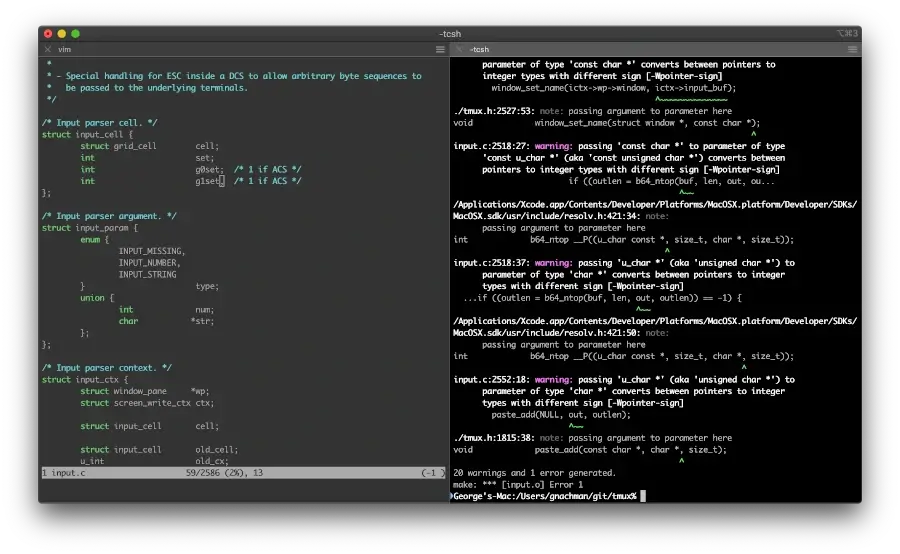
2. Alacritty
Alacritty is a cross-platform terminal emulator with a strong emphasis on simplicity and performance, which uses the system’s GPU to accelerate its performance, works well out of the box, and is both free and open source.
Alacritty is highly customizable through its configuration file and supports various features such as true color, ligatures, and custom font rendering. Overall, it’s a popular choice among developers and power users who spend a lot of time working in the terminal.
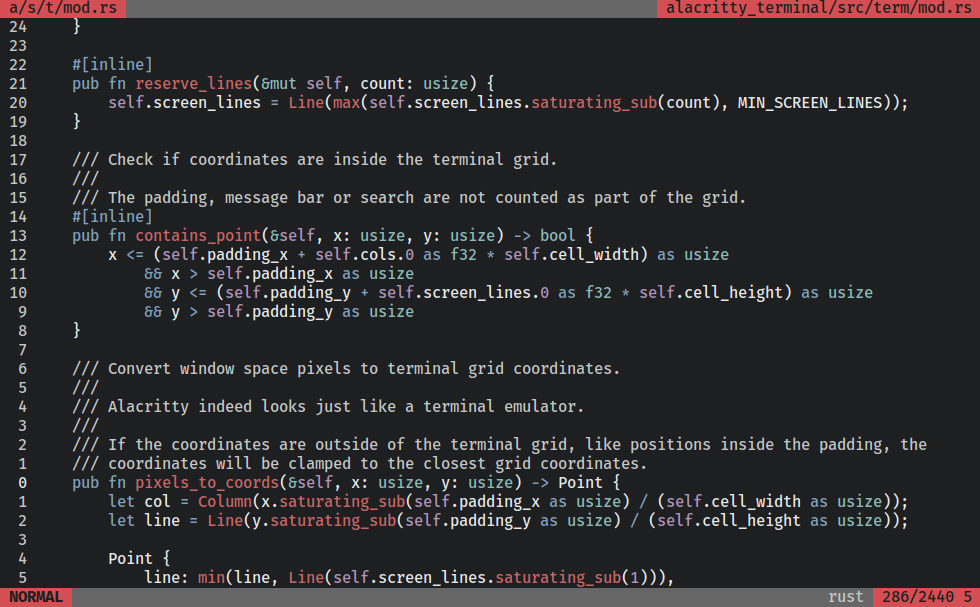
3. Hyper
Hyper is a beautiful, completely customizable terminal emulator written from the ground up in JavaScript with the aim of providing users with a beautiful and extensible command line interface.
Like iTerm2, Hyper allows for the customization of fonts, colors, and layouts. You can even create themes! Hyper is built on web technologies (HTML, CSS, JavaScript) so if you’re familiar with those, you can create very unique setups.
Hyper is designed to be extended with plugins. These plugins can add features like split panes, autocompletion, or integration with other tools. It works on macOS, Windows, and Linux, so you can have the same terminal experience across different machines.
It is 100% free and open source and you can learn more about it in our article – Hyper – The Best Terminal App.
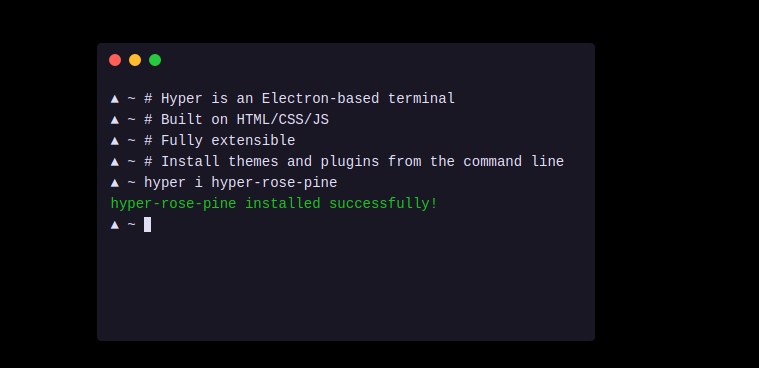
4. Terminator
Terminator is an open-source terminal app built with a focus on arranging terminals in grids.
Its behavior is mostly based on the GNOME terminal with extra features for regular CLI users and sysadmins
For example simultaneous typing in arbitrary groups of terminals, tons of keyboard shortcuts, etc. and it is free to use.
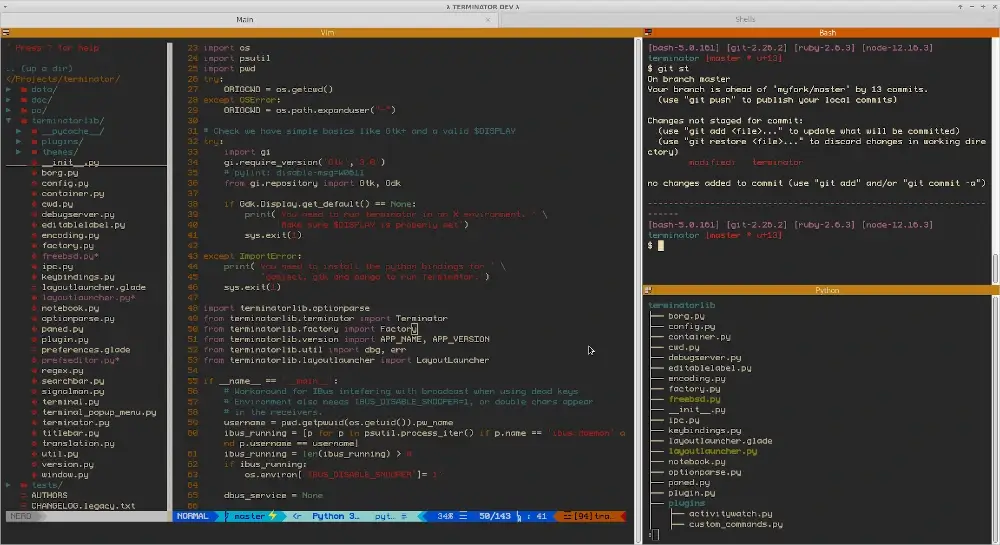
5. Kitty
Kitty is a speedy, feature-rich, GPU-based cross-platform terminal emulator, which has native support for tiling multiple windows side by side, startup sessions, multiple copy/paste buffers, function extension via Kittens (i.e. its plugins), focus tracking, OpenType ligatures, bracketed paste, etc.
Its GPU-based rendering helps translate faster and smoother experience, particularly when dealing with complex text or graphics in the terminal.
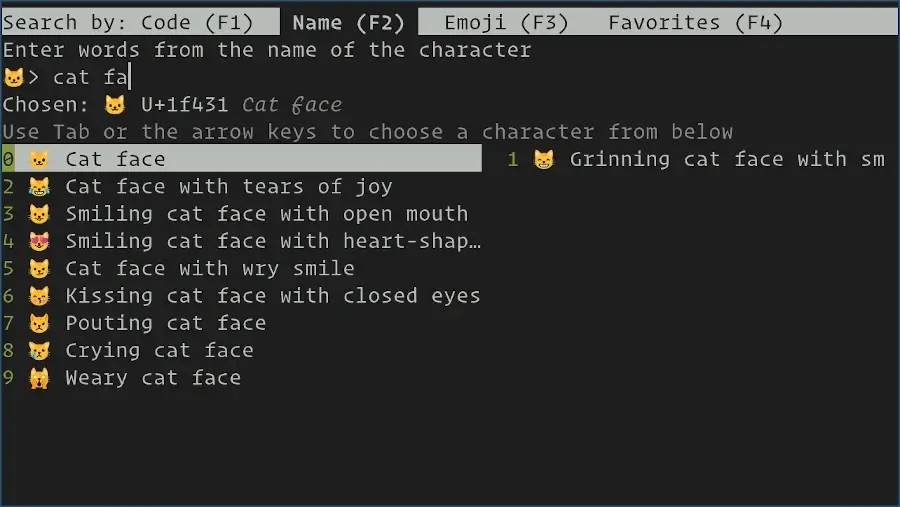
6. MacTerm
MacTerm is a powerful free and open-source terminal app built as a replacement for the MacOS terminal. With features like multiple tabs, customizable profiles, and support for various terminal protocols, MacTerm aims to enhance the terminal experience on macOS.
It’s a versatile tool for developers, system administrators, and anyone who works extensively in the command line environment on a Mac.
It supports 24-bit color, notifications, a floating command line, iTerm2 image sequences and color schemes, and standard graphics protocols, among other features.
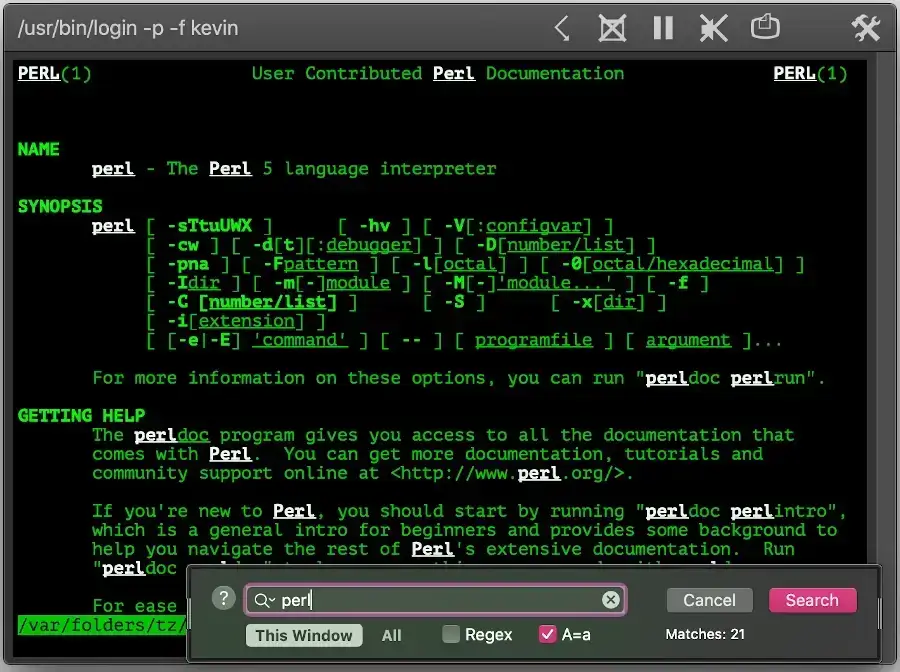
7. Byobu
Byobu is a free and open-source text-based terminal multiplexer and window manager that helps you manage multiple windows and work more efficiently in your terminal.
It enhances the terminal by providing features such as configuration utilities, convenient keyboard shortcuts, system status notifications, session management, and more.
Byobu is primarily developed to improve GNU Screen on Ubuntu servers, Byobu now works with both GNU Screen and Tmux, which are programs that let you have multiple terminal sessions in one window.
Byobu can also use it on macOS with a bit of setup. To install Byobu on macOS, you’ll first need to install a terminal emulator like iTerm2 along with tmux – a built-in terminal multiplexer.
Tmux is already included with macOS. You can launch it directly from the terminal by typing “tmux“.
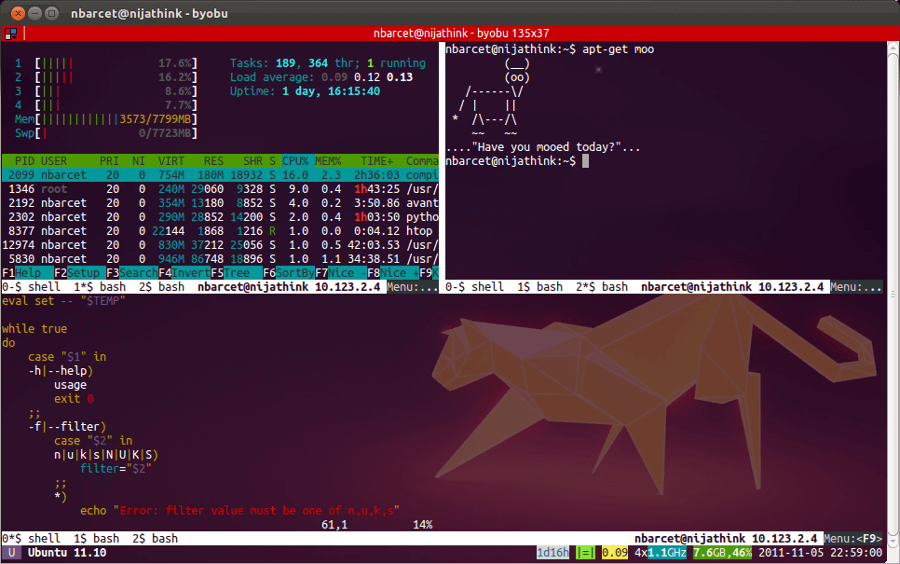
8. Zoc
Zoc is a top-tier terminal emulator designed for both Mac and Windows operating systems, boasting an array of remarkable features.
These include tabbed sessions featuring thumbnails, support for over 200 scripting language commands, communication capabilities via various protocols including SSH, Rlogin, and SCP, an address book complete with folders and color-coded hosts, as well as client automation through macro scripting, and more
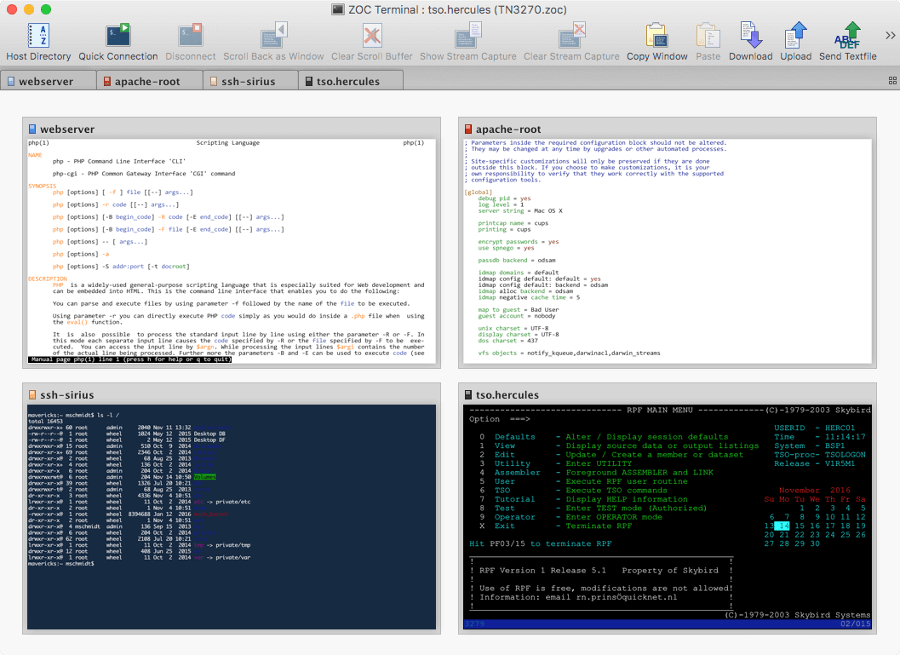
9. WezTerm
WezTerm is a highly customizable and GPU-accelerated terminal emulator and multiplexer. It provides an advanced and feature-rich terminal experience for developers, system administrators, and power users.
WezTerm offers a modern interface, various customization options, and powerful functionality to enhance productivity and efficiency in working with the command line.
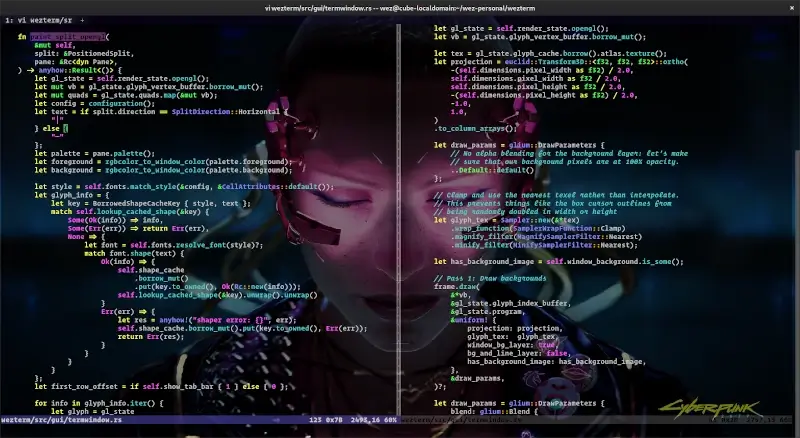
10. Amazon CodeWhisperer
Amazon CodeWhisperer makes it easier for software developers to work with command lines. CodeWhisperer for command line adds cool stuff to old-style command line tools, like giving you helpful suggestions as you type, showing explanations right where you need them, and even translating natural language into code.
It makes things even better by giving you smart suggestions when you’re using popular command line tools like Git, npm, Docker, MongoDB Atlas, and the AWS CLI. These suggestions save you time by helping you type commands faster and avoiding typing the same stuff over and over again.
The beauty of CodeWhisperer for the command line lies in its seamless integration with your current toolset; whether you’re using iTerm2 or the embedded terminal in VS Code, you can immediately leverage its benefits without the need for tool changes
Additionally, inline documentation offers valuable insights into CLI functionality, eliminating the need to switch context to a browser and preserving your workflow continuity.
It is available for free, to get started, download CodeWhisperer for the command line here
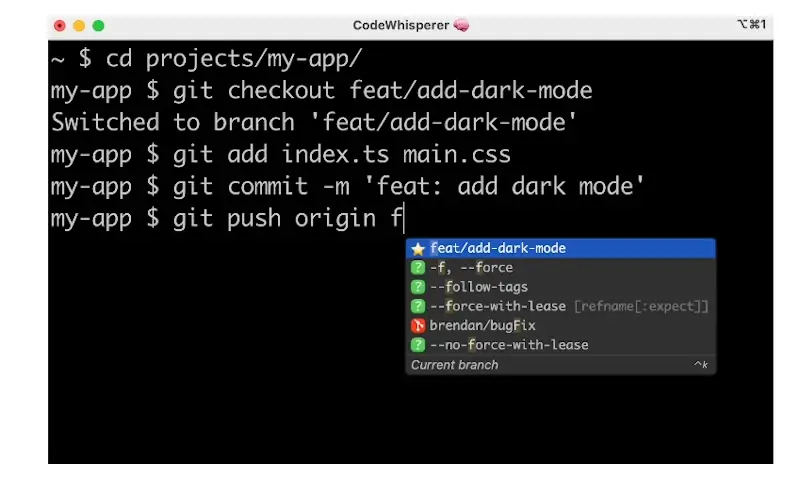
11. Rio Term
Rio is a terminal emulator that is built with Rust, WebGPU, and Tokio runtime, which is designed to be highly performant and customizable, as it uses a hardware-accelerated GPU to render text, which results in a smooth and responsive experience.
Rio terminal renderer is based on a redux state machine, which allows for efficient updates to the terminal screen. It is also designed to be extensible, with support for plugins written in any language.
Here are some of the key features of Rio:
- Hardware-accelerated GPU rendering.
- Redux state machine for efficient updates.
- Configurable to use as little or as much GPU as needed.
- Extensible with plugins written in any language.
- Supports both native desktop applications and WebAssembly.
Rio is still under development, but it is a promising terminal emulator with a lot of potential. If you are looking for a fast, customizable, and extensible terminal emulator, then Rio is worth checking out.
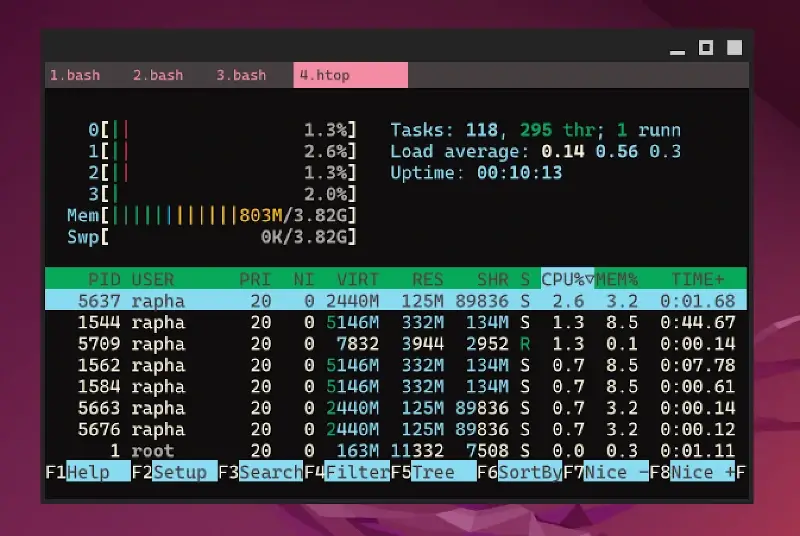
12. Warp Terminal
Warp is an innovative terminal for Mac, designed to enhance developer productivity. It offers a modern interface, lightning-fast performance, and integrates seamlessly with macOS, making command-line tasks more efficient and user-friendly.
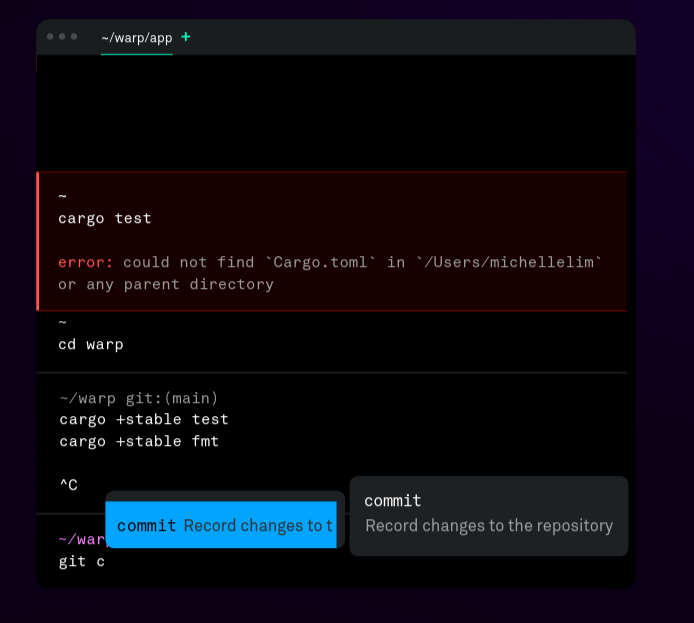
Conclusion
Now you know all the cool terminal apps that you can replace the Mac Terminal with. Feel free to share your experience with us as well as add your suggestions and reviews in the comments section below.

I’m a big fan of *Warp* – beautiful interface, great tab completion feature, and more that I haven’t been able to find on other apps. You should consider adding Warp to your list!
@Pete,
I completely agree with you! I’ve recently added Warp to the list, recognizing its outstanding features and user experience. It’s indeed a game-changer in the terminal world.
Thanks for the recommendation!
All true, especially the embedded AI is quite powerful.
I’m only a little baffled by having to create an account even to access my local system, I get why that is but it’s still quite weird.
I believe Rio terminal should have been include in this list, which is quite fast and beautiful as well.
@Roger,
I agree, Rio is a great terminal emulator that should definitely be included in any list of the best terminal emulators.
Tried iTerm2 and Kitty before, but now using Alacritty with Tmux. It has a much better performance than other terminals since it’s implemented in Rust.
You could easily perform CPU/RAM benchmarks with various terminals by running
`$ time tree /`on them.Tried several of the apps in the list and settled on iTerm2, which is native and has plenty of options.
Thanks